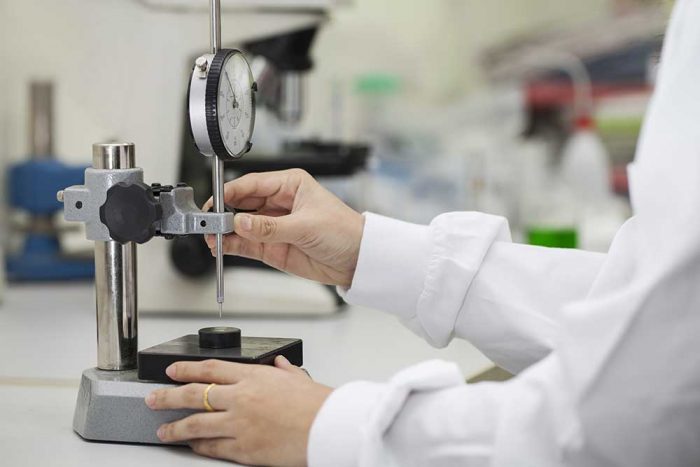A height gage comes in handy when doing a quick measurement
check in the quality room. Besides that, a height gage can help you make
accurate checks on the shop floor and this makes it one of the most valuable
tools you can have. A modern height gage is especially useful as it performs
almost as good as a coordinate
measuring machine (CMM) with near similar capabilities and accuracies.
Having a modern height gage that has multipurpose capabilities means you can
save the CMM for use when you need more critical and detailed checks and in the
meantime use the modern height gage for simpler and less sensitive tasks.
How Does a Height
Gage Work?
To read the height measurement using a height gage, a slider with a
measuring stylus attached to it is moved while staying relative to a measuring
scale placed on a beam along one vertical axis. This axis is often perpendicular
to a reference plane placed on the instrument base allowing you to take your
readings.
Types of Height Gages
There are three main types of height gages namely:
- Vernier
- Dial
- Digital
All the above height gages are useful tools that come in
handy during quality control. However, many advancements and adjustments are
being made to the digital height gage to make it more applicable to perform
more complicated tasks. Discussed below are some of the capabilities that have
resulted due to the advancements made to modern height gages:
Higher Accuracy,
Resolution and 2D Measurement
Higher resolution is made possible by new encoders that have
been installed in modern gages. A strong construction also increases the
probability for higher accuracies. It is important to remember that increased
gage stability leads to increased weight hence difficulty in sliding the gage
as a result of increased friction. If you have a print that needs a 2D
measurement, a digital height gage with a 2D measurement feature is the tool
for you. By rotating the 2D measurement feature 90 degrees and measuring the
same points, you can get the diagonal measurements with ease.
A height gage with calculation abilities makes it easy to
get the measurement between centers. This calculation power allows the height
gage to memorize the lowest and highest points within a single sweep. You can
also interchange the ball probe with smaller ones to enable the gage to reach
narrow slots. Measuring the bottom edge of a groove or slot was near impossible
until a microprocessor combined with a ball probe to cover for the ball
diameter was brought into the market. This combination makes measuring the
distance between two centers easier and quicker.
Other Measurements
Most new height gages have a horizontal offset or special
probes that make it possible for the gage to measure angles during quality
checks. Other new height gage models can input the output from some linear
displacement devices like indicators. This input enables the displays to show squareness,
as well as straightness.
Data and Output
New height gages offer ways to make easy programs that take
an operator through pre-measured points in order to make sure the same
positions are measured all the time, not overlooking a single measurement.
There is no arguing that modern height gages are the new
wave and with so many capabilities, owning one for your business will only
prove beneficial to you.





